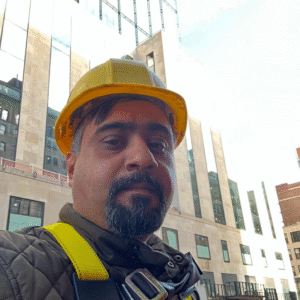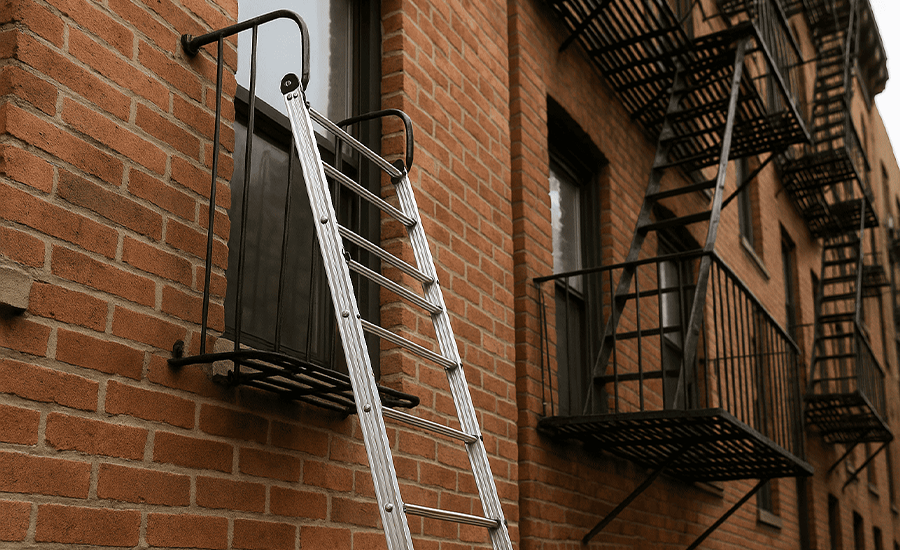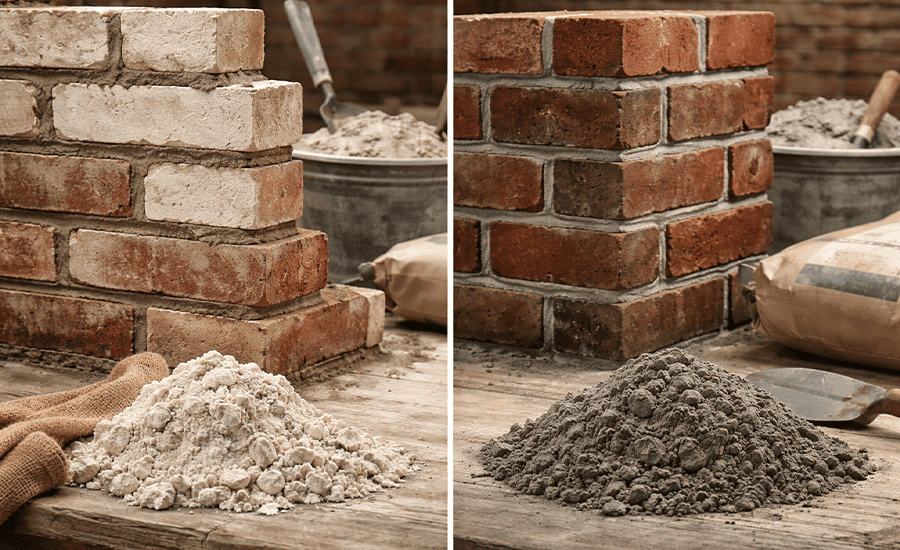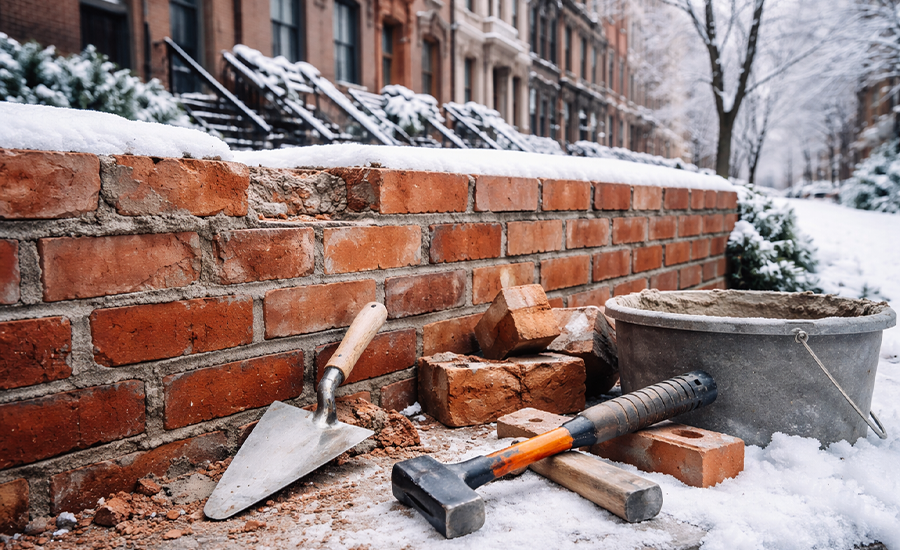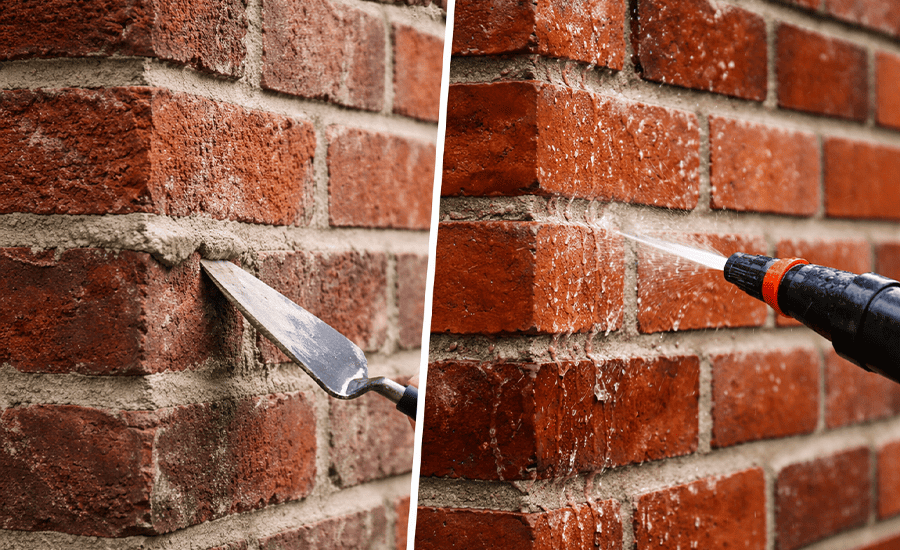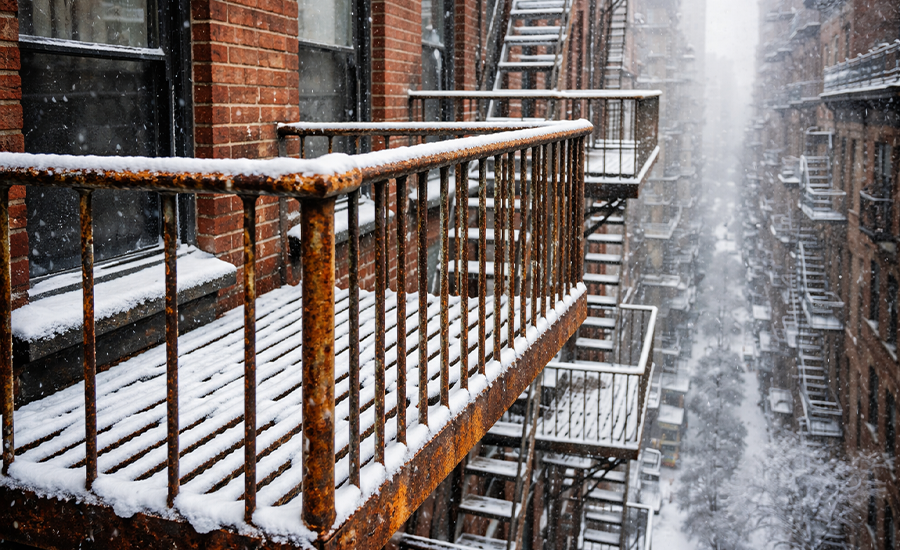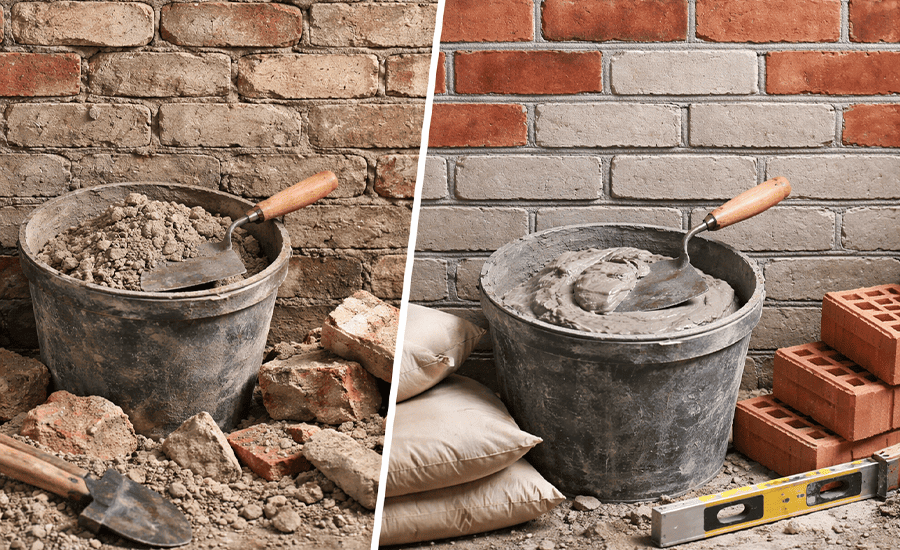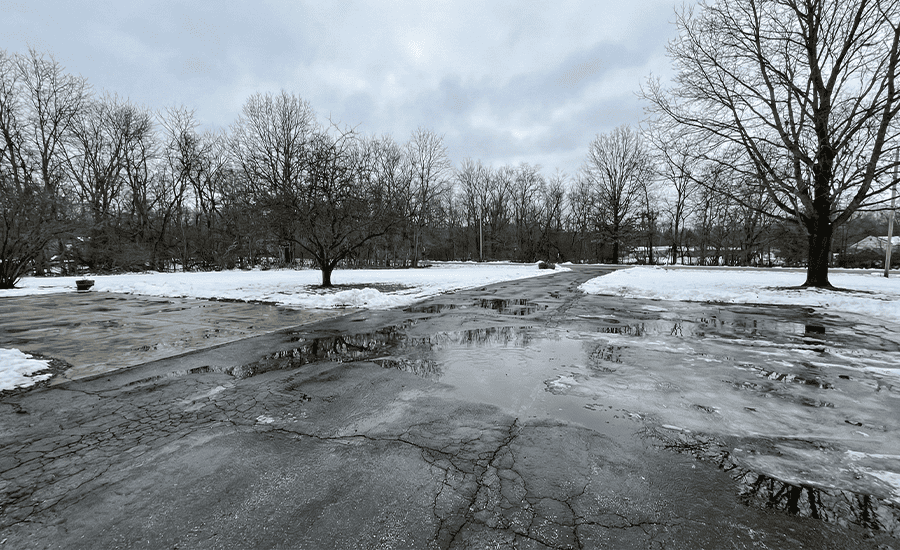Fire escapes play a vital role in the safety of residential and commercial buildings that adhere to legal safety protocols in NYC. With utmost safety and protection, collapsible fire escapes are installed with attention to detail and precision that complies with DOB, OSHA & NFPA. These collapsible fire escapes are not permanent ladders that fold, swing, or drop outwards. NYC has strict rules on fire escapes, and legality depends on whether the design meets the NYC Building Code, Fire Code, and State Multiple Residence Law.
In this blog, we’ll discuss the compliance of the collapsible fire escape, challenges, and pros & cons of the collapsible fire escape:
What Is a Collapsible Fire Escape?
Collapsible fire escapes are those types of offers that are not permanently fixed in one position, space-efficient, and can roll out automatically or manually in the time of an emergency. There are three types of collapsible fire escape, including:
- Drop ladders: Ladders that extend or slide down to the ground.
- Swing-down ladders: Swing or fold to reach the ground.
- Retractable systems: Foldable or hidden designs.
To better understand how collapsible fire escapes differ from other designs, check out our detailed guide on what are the different types of fire escapes?
Legal Status of Collapsible Fire Escapes
Fire escapes are legal in minimal cases, mostly if they align with NYC’s strict safety protocols and compliance benchmarks.
- Drop ladders: In some areas, drop ladders are not approved legally or used as a secondary method for fire escape because it’s difficult for children or older adults to access, and they also can be hard to deploy in emergencies.
- Counterbalanced: It is legal in NYC, but its deployment depends on the FDNY local fire and building code.
- Partial collapsible systems: In historic buildings, it’s legal only if it’s properly maintained, inspected, and meets accessibility standards.
If you’re unsure which model is ideal for your property’s layout and compliance needs, explore our article on which type of fire escape is best for NYC apartments?
Regulatory Guidelines for Collapsible Fire Escapes
Before installing or maintaining any collapsible fire escape in NYC, it’s important to understand the core structural and legal standards that regulate their use.
- Structural resources: Metal, fireproof, corrosion-resistant.
- Maximum support threshold: Must support multiple evacuees simultaneously.
- Ease of access: No locks, bars, or grilles blocking windows/doors.
- Approvals: Installation/removal requires DOB approval.
- Servicing: Inspected, painted, and kept functional.
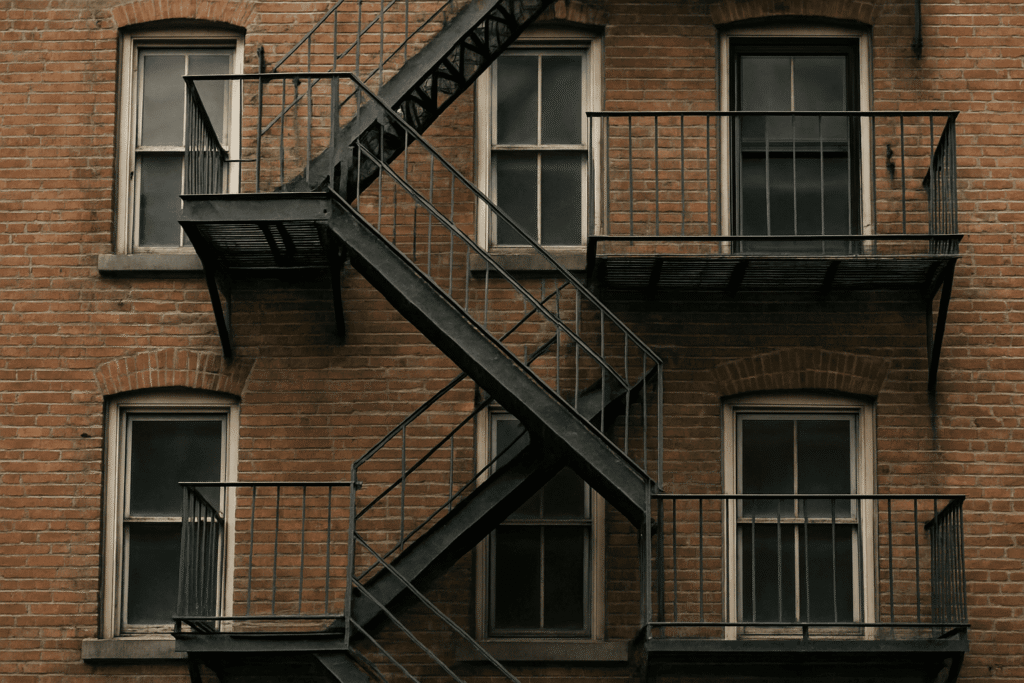
The Upsides & Downsides of Collapsible Fire Escapes
Let’s have a look at some of the pros and cons of a collapsible fire escape:
| Upsides | Downsides |
|---|---|
| It is space-efficient, and folded ladders reduce the footprint on the ground. | It becomes vulnerable to damage when proper care is neglected. |
| It minimizes the chance of unauthorized access. | It is restricted to modern constructions. |
| It can be installed in the older models. | It should comply with enforced load requirements. |
| It is found in preservation-era buildings. | It poses a risk of rusting, which compromises smooth operations. |
Critical Concerns with Collapsible Systems
While collapsible fire escapes can be space-efficient, they also come with specific challenges and compliance issues that every property owner should consider.
- Performance Consistency: Should be promptly deployed in an emergency.
- Rust Susceptibility: The corrosion can block the movement and lock up the fire escape.
- Compliance Costs: Regular upkeeps & inspections should be conducted with local law 11.
- Legal responsibility: When the fire escapes are not approved, they may face violations and fines.
- Plan Authorization: Design of the system should be according to strict NYC protocols and have structural soundness.
- Preservation Limits: Modifications without approval are controlled by the preservation board review.
For properties with rooftop access or limited space, learning how do rooftop fire escapes work? can help you identify safer and code-compliant alternatives.
Conclusion
In conclusion, collapsible fire escapes are efficient and legal in NYC but only if they comply with strict city standards. Homeowners make sure the collapsible fire escapes are compliant, functional, and safe to evacuate. If homeowners want legal assistance and permits for collapsible fire escapes installation, make sure that they are properly maintained, inspected, and used only in times of emergency.
Sardar Restoration Corp proudly serves every corner of NYC, including the Bronx, Manhattan, Brooklyn, Westchester, and Queens. Our services are designed to meet your specific needs, providing top-quality solutions wherever you are. Check our service areas to see how we can assist you in your location.
Contact us today at (+1) 917-355-8556 or sardarrestoration@gmail.com, or visit us at 2770 Fish Ave, Bronx, NY 10469, United States.
FAQ
Do you install new collapsible fire escapes in NYC?
No! Sardar Restoration Corp. only performs legal work, and it is illegal in NYC to install collapsible fire escapes in new buildings. Our licensed contractor offers repairing, upgrading, or replacing the fire escape.
Do you handle permits with the NYC Department of Buildings?
Yes! Sardar Restoration Corp. excellently handles all the documentation imposed by DOB, including permits, approvals, and certifications, ensuring that your property is compliant.
Do you provide fire escape inspections?
Without a doubt! Sardar Restoration Corp. offers detailed safety checks and Local Law 11 façade inspections that meet all safety codes and functionalities.
Do you work on landmark or historic buildings?
Yes! Sardar Restoration Corp. works on historic buildings in accordance with the (LPC) LANDMARK PRESERVATION Commission, ensuring to preserve structural soundness while complying with safety standards.
Are collapsible fire escapes safe to use during emergencies?
Collapsible fire escapes can be safe if they are regularly inspected, rust-free, and properly maintained. However, improper upkeep or outdated systems may cause deployment issues during emergencies. Always ensure compliance with NYC safety codes before relying on one.
How often should collapsible fire escapes be inspected in NYC?
NYC recommends annual inspections, especially under Local Law 11, to ensure collapsible systems remain functional and structurally sound. Regular maintenance prevents corrosion, ensures smooth operation, and keeps the fire escape legally compliant.

